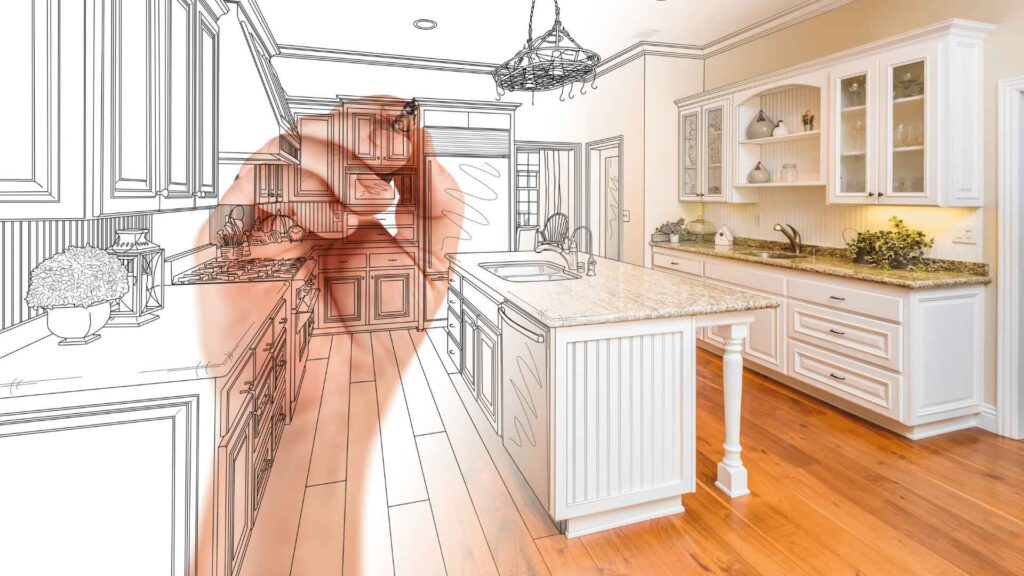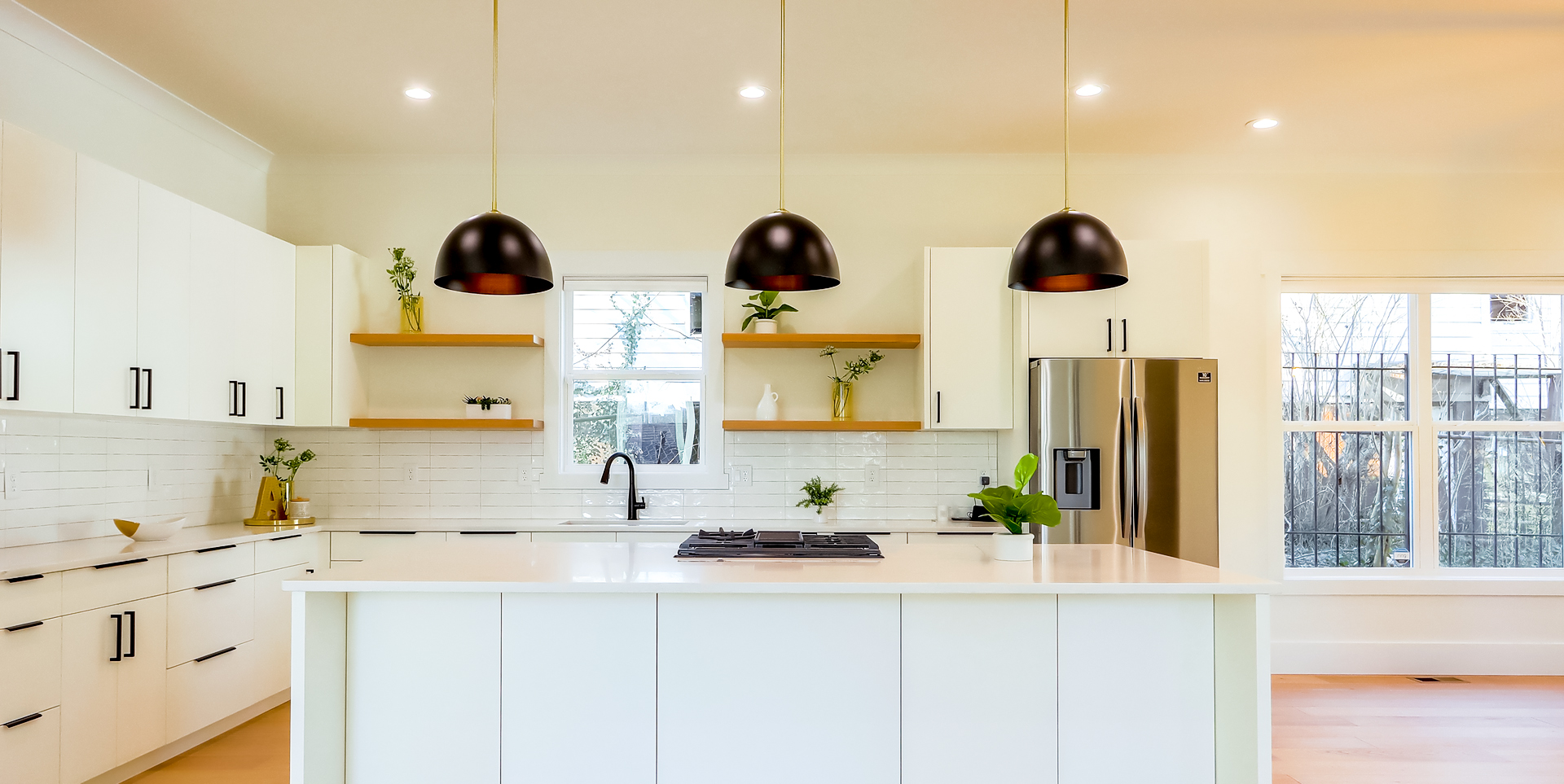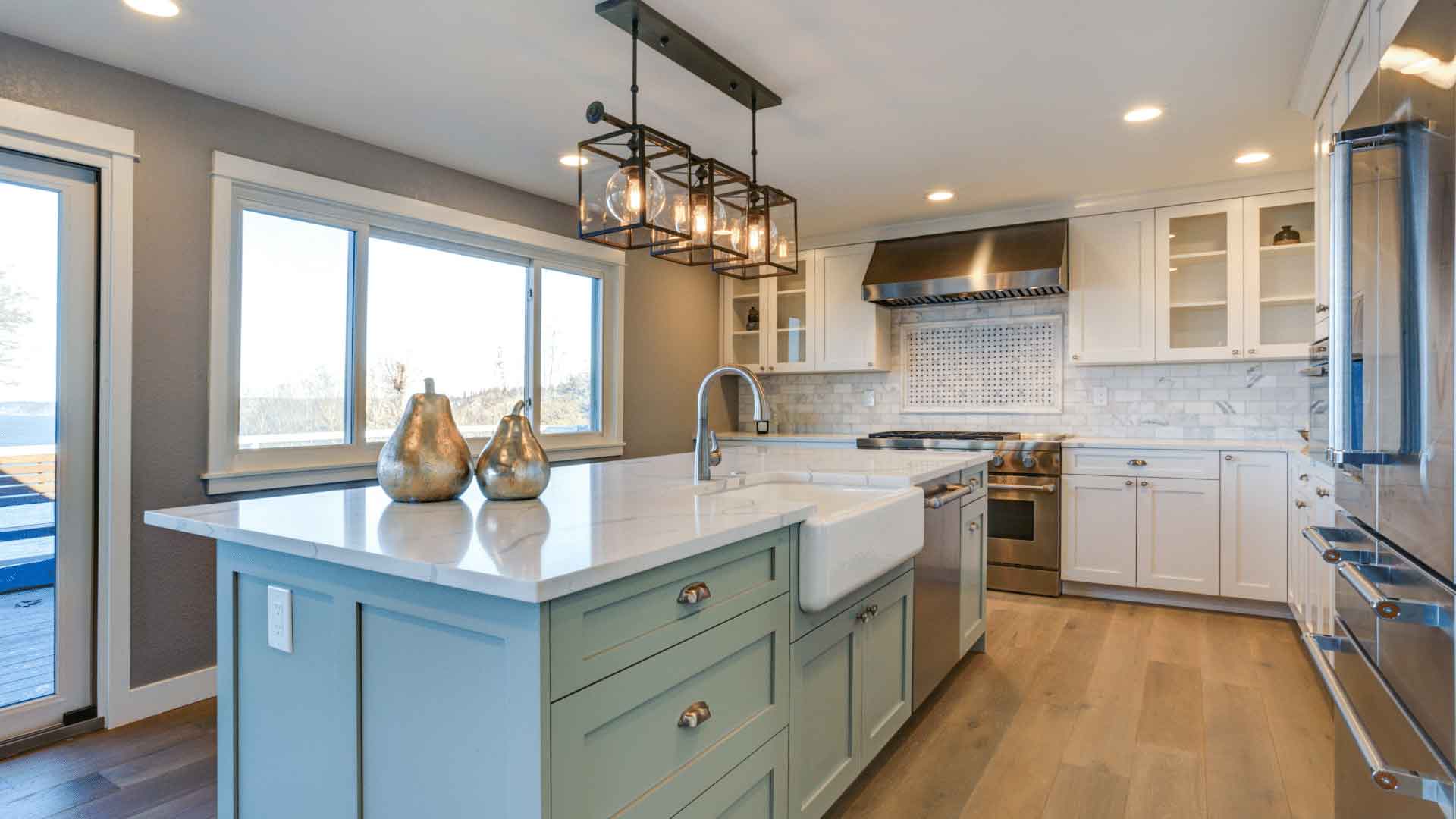Remodeling a kitchen is an exciting endeavor, allowing for the opportunity to create a new space that is both aesthetically pleasing and functional.
A crucial part of any kitchen remodel is selecting the right flooring option; with this in mind, it is important to understand the pros and cons associated with various flooring options.
This article examines different types of flooring material available when planning a kitchen remodel, as well as their respective advantages and disadvantages.
Consideration will be given to factors such as cost, durability, maintenance needs and aesthetic appeal.
Through understanding these characteristics, readers can make informed decisions regarding which type of flooring best suits their individual requirements.
Ceramic Tile
Ceramic tile is a popular choice for remodeling kitchen floors.
It offers an array of design options, allowing the homeowner to create anything from classic to modern looks.
Additionally, ceramic tile options are available in a variety of colors and textures.
In terms of cost comparison, prices range depending on the quality and size of tiles chosen; however, it can be more affordable than other flooring materials such as hardwood or stone.
Another advantage of using ceramic tile is that maintenance requirements are minimal: regular sweeping and occasional mopping should suffice.
Stains and spills should be cleaned up right away so they do not set into the grout between the tiles.
With proper care, ceramic tile will remain beautiful for many years to come.
To ensure long-term durability, look for tiles with high wear ratings when making your selection.
Hardwood
Hardwood is a popular option for kitchen flooring, as it can offer an elegant look that many homeowners desire. However, hardwood floors come with both advantages and disadvantages to consider when doing a kitchen remodel.
For example, the cost of installation can vary depending on the type of wood chosen and whether any repairs are needed prior to installation. On average, solid hardwood tends to be more expensive than engineered hardwood due to its higher quality construction. It’s important to compare costs between different materials before making a decision.
When considering maintenance requirements, hardwood floors require regular cleaning and upkeep in order to keep them looking their best. This includes sweeping or vacuuming regularly and using special products designed specifically for hardwood floors. In addition, water should never be used directly on the surface of the wood since this can cause warping over time. Wax may also need to be applied periodically in order to protect against scratches from furniture or pets.
With proper care and maintenance, however, a hardwood floor will last for years without needing replacement.
Laminate
Making the switch from hardwood to laminate flooring may be a practical decision for many homeowners.
While it can provide a similar look, it is far more affordable and requires less maintenance than traditional hardwood floors.
Laminate offers an array of styles in both wood-looks and tile-looks that will fit any style or budget.
Furthermore, with advancements in technology, laminates today are made to emulate higher end materials like stone or marble at a much lower cost.
The affordability of laminate does not come without costs however; its synthetic composition means that scratches and dents may occur due to everyday wear and tear, but these blemishes can usually be remedied by sanding out the imperfections on the surface.
This type of repair generally comes with minimal cost compared to refinishing a genuine hardwood floor.
Maintenance is also easier since there’s no need to seal or wax laminate floors; regular sweeping or vacuuming should keep them looking good as new.
Ultimately, while laminate may not offer the same level of durability as real hardwood, it makes up for this through its relatively low price point and easy upkeep.
Vinyl
Vinyl is a popular option for kitchen flooring due to its affordability and ease of installation. From an economic perspective, vinyl has low upfront costs compared to other materials used in remodels. Installation costs are also relatively low when hiring professional kitchen floor installers in Atlanta since the material can usually be situated over existing floors with minimal preparation or repair work required.
Durability ratings are highly positive; this type of flooring typically lasts well over ten years before needing replacement even with regular use. Its resilience against wear and tear makes it ideal for kitchens where there is significant foot traffic throughout the day. However, homeowners should bear in mind that despite its durability, vinyl will still show signs of age such as fading and discoloration after several years’ worth of usage.
Linoleum
Unlike vinyl, linoleum is an eco-friendly flooring option as it is made from natural materials such as cork dust, limestone, and linseed oil. This makes it a great choice for those seeking to install an environmentally friendly floor in their kitchen remodel.
Its durability and ability to resist water damage are additional benefits of using this type of flooring material. In addition to being eco-friendly, linoleum also provides the same warm look that many people prefer over the coldness of bamboo flooring or other hardwood options. As such, it can be a good alternative if you want to create a cozy atmosphere within your kitchen space without sacrificing environmental friendliness.
Linoleum does require more maintenance than other types of floors due to its susceptibility to scratches and staining. It should be cleaned regularly with soap and water or a mild detergent solution in order to keep it looking its best. Additionally, waxes or polishes may need to be applied periodically in order to help protect the surface against wear and tear.
However, these minor drawbacks do not outweigh all the advantages that come with choosing linoleum for your kitchen remodel – ultimately making it an excellent investment for any homeowner who values both style and sustainability.
Cork
Cork is a popular option for kitchen flooring as it offers numerous benefits. It has excellent durability, providing an attractive and stable covering that can last for many years with minimal maintenance needed.
Cork’s soft texture makes it comfortable to stand on, making it especially well suited for kitchens where you are likely to be standing in the same spot while cooking or baking.
Its natural properties make cork highly waterproof and fire resistant, so spills of water or food won’t ruin your floors and they will not catch fire easily either.
When looking at sustainability, cork ticks all the boxes: it comes from renewable sources such as trees that don’t require replanting after harvesting, and its production process causes minimum damage to the environment.
Furthermore, due to its anti-allergenic character, cork is perfect if someone in your household suffers from allergies triggered by dust mites or other pollutants.
Easy installation and low cost also add up to why cork is one of the top choices when considering what type of flooring material should be used in a kitchen remodel.
Natural Stone
Natural stone is a popular choice for kitchen flooring due to its aesthetic appeal and natural beauty. It is available in many different types of stone, such as marble, granite, limestone and travertine. Natural stone offers an elegant look that can be used to create unique designs and patterns on the floor.
However, it has some drawbacks when compared to other materials: it can be expensive, prone to stains, difficult to clean and maintain over time. When considering durability, natural stone may require more maintenance than other options like ceramic tile or laminate wood. The material must be sealed regularly to protect against water damage and staining from food or liquids that are spilled onto it.
Additionally, stones with high porosity will absorb moisture which could cause cracking over time if not addressed quickly. In order to keep it looking attractive for years to come, regular cleaning and resealing should be maintained. While this does add extra work for homeowners, the timeless beauty of natural stone makes it worth the effort for those who appreciate classic elegance.
Conclusion
The choice of flooring for a kitchen remodel is an important decision and one that should not be taken lightly.
With so many options to choose from, it can seem overwhelming.
Ceramic tile, hardwood, laminate, vinyl, linoleum, cork, and natural stone all offer different benefits which must be weighed against the costs.
Each type has its own pros and cons depending on the individual needs of the homeowner.
Ultimately, careful consideration must be given to each option before making a final selection in order to ensure that the end result meets both aesthetic and practical requirements.








